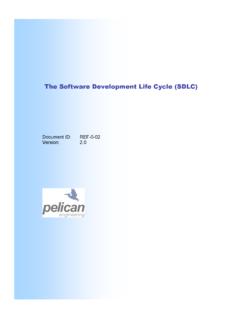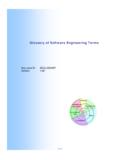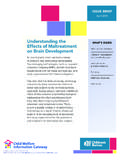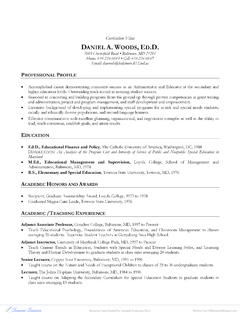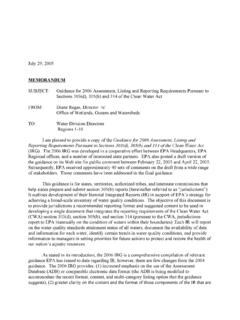Transcription of ), Free will, Emotions, and Moral Actions: Philosophy and ...
1 1 The development of empathy : How, When, and Why Nicole M. McDonald & Daniel S. Messinger University of Miami Department of Psychology 5665 Ponce de Leon Dr. Coral Gables, FL 33146, USA 2 empathy is a potential psychological motivator for helping others in distress. empathy can be defined as the ability to feel or imagine another person s emotional experience. The ability to empathize is an important part of social and emotional development , affecting an individual s behavior toward others and the quality of social relationships. In this chapter, we begin by describing the development of empathy in children as they move toward becoming empathic adults. We then discuss biological and environmental processes that facilitate the development of empathy .
2 Next, we discuss important social outcomes associated with empathic ability. Finally, we describe atypical empathy development , exploring the disorders of autism and psychopathy in an attempt to learn about the consequences of not having an intact ability to empathize. development of empathy in Children Early theorists suggested that young children were too egocentric or otherwise not cognitively able to experience empathy (Freud 1958; Piaget 1965). However, a multitude of studies have provided evidence that very young children are, in fact, capable of displaying a variety of rather sophisticated empathy related behaviors (Zahn-Waxler et al. 1979; Zahn-Waxler et al. 1992a; Zahn-Waxler et al. 1992b). Measuring constructs such as empathy in very young children does involve special challenges because of their limited verbal expressiveness.
3 Nevertheless, young children also present a special opportunity to measure constructs such as empathy behaviorally, with less interference from concepts such as social desirability or skepticism. One typical way of measuring empathy and its precursors in young children is to examine their responses to another s distress. Below we discuss the typical stages of empathy development , beginning with newborns and infants distress reactions to another s expressed 3 distress, to empathic concern and helping behavior in toddlers, to gains in cognitive empathy in preschoolers, and, finally, to the stability of empathy as a trait into early adulthood. Reflexive Crying in Newborns As early as 18 to 72 hours following birth, newborns who were exposed to the sound of another infant crying often displayed distress reactions, a phenomenon referred to as reflexive or reactive crying, or emotional contagion (Martin & Clark 1982; Sagi & Hoffman 1976; Simner 1971).
4 Newborns responded more strongly to another infant s cry than to a variety of control stimuli, including silence, white noise, synthetic cry sounds, non-human cry sounds, and their own cry (Martin & Clark 1982; Sagi & Hoffman 1976; Simner 1971). This suggests that infant distress reactions to the cry of another infant are not simply a response to the aversive noise of the cry; rather, they may be a very early precursor to empathic responding. The specificity of reflexive crying to the sounds of other infants cries supports the idea that there is a biological predisposition for interest in and responsiveness to the negative emotions of others. Personal Distress in Infancy Feelings of personal distress in response to others negative emotional experiences during infancy are thought to be precursors to empathic concern (Hoffman 1975; Zahn-Waxler & Radke-Yarrow 1990).
5 Young infants are thought to not fully differentiate the self from others and to have only basic emotion regulation capabilities. Young infants, in fact, tend to become overwhelmed with others negative emotions and may engage in behaviors, such as self-comforting, to reduce their own distress. Along with the development of self-other differentiation, perspective taking, and emotion regulation during the second year of life, however, there appears to be a transformation from concern for the self to a capability for concern for the other (Knafo et al. 2008). 4 Empathic Responding in Toddlerhood Zahn-Waxler and colleagues have conducted extensive longitudinal studies examining the development of empathy related behaviors over the second and third years of life.
6 These studies examined typically developing children s responses to the simulated distress of a stranger and of their parent, at home and in the laboratory, between the ages of 14 and 36 months. They measured different manifestations of empathic responding, including concern ( , sad look, I m sorry ), hypothesis testing ( , What happened? ), prosocial behavior ( , hugs, Are you ok? ), as well as precursors to empathy such as personal distress and self-referential behaviors ( , trying on another s experience). Many of these behaviors underwent significant development over the second year of life, with age related increases in empathic concern, hypothesis testing, and prosocial behavior between 14 and 24 months of age (Knafo et al.)
7 2008; Zahn-Waxler et al. 1992a). In fact, nearly all toddlers engaged in some helping behavior in response to real and simulated distress by two years of age. Furthermore, the quality of prosocial behavior developed over the second year of life. The youngest infants responses were comprised of primarily physical actions, whereas by 18 to 20 months, toddlers were capable of a wide variety of helping behaviors, such as verbal comfort and advice, sharing, and distracting the person in distress (Zahn-Waxler et al. 1992a). By the third year of life, young children were capable of a variety of empathy related behaviors, including expressing verbal and facial concern and interest in another s distress, and continued to engage in a variety of helping behaviors.
8 Cognitive empathy Gains in Early Childhood empathy typically has both emotional and cognitive components, although these components can be experienced separately. Emotional empathy is the vicarious experiencing of another s emotional state, which, as stated above, children may experience in some form as early 5 as infancy and toddlerhood. In contrast, cognitive empathy , which is also sometimes referred to as theory of mind or perspective taking, is the ability to accurately imagine another s experience. As children enter the preschool and elementary school years, there are significant gains particularly in the area of cognitive empathy . This is partially because the children s increased language capacities facilitate empathic reflection as well as the measurement of such empathic abilities.
9 By preschool age (4-5 years), children are generally capable of taking another s perspective in false belief tasks, which is a frequently used indicator of theory of mind development (Wellman et al. 2001). During false belief tasks, children are typically presented with a scenario with two characters, during which one of the characters places an item in a given location and leaves the room. Then, the second character arrives and moves the item to a new location. When the first character re-enters the room, the participating child is asked where the first character will look for the item. If the child has a theory of mind, she should respond with the original location rather than the true location, thereby indicating a capability to see the situation from the (limited) perspective of the character who left the room (Wellman et al.)
10 2001). The developmental trajectory in regard to performance in this task is similar across cultures, although there is some discrepancy in the timing of development (Liu et al. 2008). The ability to understand others perspectives is integral for fully and successfully identifying with another s experience. Theory of mind helps to transform the early developing affective experience of empathy to a more sympathetic, other focused experience by more fully attaching one s empathic feelings to a conceptualization of the other s experience rather than one s own. The increase in the ability to identify with another s experience also allows children to engage in more effective helping strategies, as they are presumably viewing the situation more accurately.





